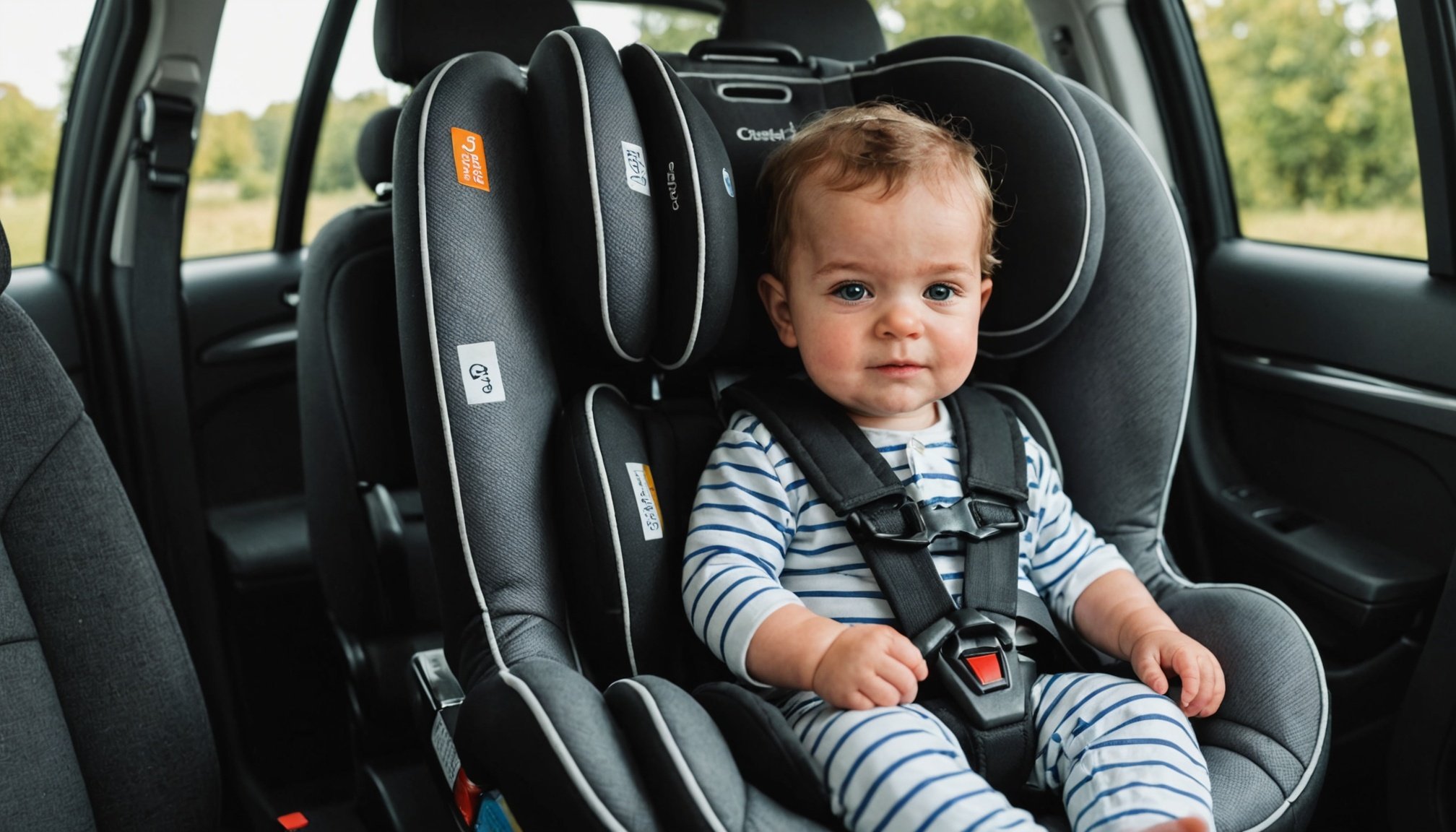Overview of UK Car Seat Regulations
In the UK, car seat regulations are vital for ensuring infant safety compliance while travelling. Under UK car seat laws, it is compulsory for all children to use an appropriate car seat until they reach 12 years old or 135 centimetres in height, whichever comes first. These regulations emphasise that a child’s safety is significantly compromised without proper car seat use, which is why strict adherence is crucial.
Car seats are classified by a child’s age and weight, ensuring suitable support and protection is offered. Infants, for example, are required to travel in rear-facing seats until they are at least 15 months old. This orientation is designed to protect toddlers’ still-developing bones and organs during collisions. As a child grows, they transition to forward-facing seats and eventually booster seats, each stage requiring a specific type of car seat that complies with the outlined regulations and ensures maximum safety.
Also read : Essential tips to extend the longevity of your hybrid car battery in the uk
Compliance with these laws not only shields a child from potential harm but also avoids legal penalties, underscoring the importance of selecting the correct car seat for your child. Parents and caregivers must stay informed about these regulations to make safe and appropriate decisions regarding car seat usage.
Overview of UK Car Seat Regulations
In the United Kingdom, adhering to car seat regulations is essential for maintaining infant safety compliance. These rules require parents and caregivers to use car seats until a child turns 12 years old or reaches 135 centimetres in height, highlighting their critical role in child safety. These laws do not exist merely as formalities; they are pivotal in protecting children during travel by reducing the risk of serious injury in the event of an accident.
Also to discover : Essential Steps to Register Your Custom Motorcycle in the UK: A Complete Guide
Car seat regulations in the UK classify seats based on age and weight to assure that children receive adequate safety measures. For infants, the use of a rear-facing car seat is mandatory until they are at least 15 months old. This position provides optimal protection for an infant’s vulnerable neck and spine. As toddlers grow, they advance to forward-facing seats and later to booster seats, in line with prescribed weight categories. Each stage of growth requires a distinct type of car seat, underlining the importance of parents and caregivers understanding and abiding by these age and weight guidelines.
A noteworthy aspect of these rules is the legal repercussions of non-compliance, emphasizing their serious intent to safeguard child passengers.
Types of Car Seats for Infants
Understanding the types of car seats available is essential for ensuring optimal car seat safety. Infants, due to their delicate physical development, require targeted protection. Below is an overview of the primary car seat types suitable for infants.
Rear-Facing Seats
Rear-facing seats offer crucial protection for infants by supporting their head, neck, and spine, minimizing injury risk during accidents. Experts recommend using these seats from birth until at least two years old, or when the child exceeds the seat’s weight and height limits. Look for models with adjustable harnesses and ample side impact protection to maximize safety.
Forward-Facing Seats
Transitioning to forward-facing seats occurs after surpassing rear-facing limits, typically around two years of age or as per the seat’s instructions. Ensure these seats have features like a five-point harness and reinforced headrests to provide stability and security as the child grows. Adhering to age-appropriate guidelines solidifies child safety.
Booster Seats
Booster seats become relevant when a child outgrows forward-facing seats, generally when they reach four years old and at least 100 centimetres in height. High-back boosters offer added side protection, whereas backless boosters are space-efficient. Choose based on vehicle fit and child’s comfort to ensure seamless safety transition.
Installation Guidelines
Proper car seat installation is crucial to maximise safety tips and secure your child during travel. Begin by examining your vehicle’s manual for specific recommendations relating to car seat placement. It’s essential to use the car seat belt or the ISOFIX system to anchor the car seat firmly. ISOFIX offers a straightforward mechanism that alleviates guesswork when connecting the car seat directly to the car. Meanwhile, the seat belt method requires careful threading to ensure it fastens correctly, with no slack.
During installation, avoid common errors like improper recline angles and slack belts. Ensure the car seat is tightly fitted by performing a push-and-pull test; there should be minimal movement. Turn car seat harnesses to the correct height before each use for added security.
For boosters and forward-facing seats, double-check that the top tether is attached to an appropriate anchor point, offering added stability. Rear-facing seats should always be installed at the correct tilt to protect an infant’s delicate neck and spine.
Prioritising these installation measures will enhance child passenger safety, providing peace of mind for journeys ahead. Regular checks ensure that fittings remain secure, meeting evolving safety standards.
Penalties for Non-Compliance
Non-compliance with UK car seat laws incurs significant consequences, reflecting the laws’ aim to safeguard child passengers. Parents and caregivers might face fines ranging from £30 to £500, depending on the severity of the infraction. These financial penalties serve as a deterrence, underlining the importance of abiding by car seat regulations for all vehicle occupants under 12 or shorter than 135 centimetres.
Beyond monetary repercussions, non-compliance can lead to more serious outcomes, such as criminal charges if neglect results in injury. Awareness of these consequences helps to emphasize the critical nature of child safety laws, urging compliance to prevent harm and avoid legal trouble.
To stay informed, parents should consult resources—government websites or local councils—to understand specific regulations and penalties more thoroughly. Engaging with these resources ensures caregivers are well-equipped to make informed decisions about child safety on the road.
Furthermore, authoritative safety organizations, like the Royal Society for the Prevention of Accidents, offer insights into infant safety compliance and can guide parents in proper car seat usage, supporting both adherence to laws and the protection of children during travel.
Safety Tips for Car Seat Use
Ensuring child passenger safety involves more than just installing a car seat correctly. Regularly checking for proper fitting is essential in maintaining a secure car seat. Verify that the harness is snug and adjust the harness height as your child grows. Loose harnesses can severely undermine car seat safety in collisions.
When using car seats in the winter, avoid bulky clothing. Thick coats can create slack and prevent the harness from fitting snugly. Instead, secure your child in light clothing and place a blanket over them after buckling the harness. This method ensures warmth without compromising safety.
Maintaining your car seat in good condition is equally important. Regularly inspect for wear and tear, ensuring all belts and buckles function properly. Clean the seat as per manufacturer instructions to prevent degradation of materials. Be cautious with storage; avoid placing the seat in areas exposed to extreme temperatures to prolong its lifespan.
Incorporating these car seat safety tips into your routine is invaluable. They not only enhance safety but also give you peace of mind, knowing your child is well-protected on every journey. Prioritising these habits ensures the car seat performs optimally, aligning with the highest safety standards.











